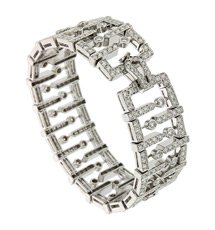Gazing into Your Diamond
Diamond clarity is one of the Four Cs of diamond quality. It measures the state of the jewel’s crystal, while carat, color and cut determine other factors. The Gemological Institute of America rates clarity on a scale ranging from Flawless to Included 3. The fewer quirks in the stone, the higher the grade, and more unusual the diamond engagement ring.
Diamonds don’t form in a vacuum. They take shape deep beneath the earth among other stones, under volatile conditions. Common clarity characteristics include healed fractures in the gem known as feathers, and barely visible features known as pinpoints. Many pinpoints clustered together are called clouds. Crystals are other minerals caught within the diamond. Some jewels have garnets or even other diamonds trapped inside.
Most diamonds mined are best suited for industrial use. A small fraction has quality enough for use in diamond rings and other jewelry. Of these, gems with few to no characteristics are quite rare. Clarity may help underscore cut by having fewer disruptions to traveling light. For these reasons, there’s a strong demand for diamonds with a high clarity grade.
Clarity characteristics can have desirable effects. Clouds can take on whimsical shapes such as hearts, masks, or butterflies. Feathers may resemble dancers or birds in flight. These quirks may require 10X magnification to see, but still add charm to the jewel. Clarity characteristics also serve a practical purpose. Like fingerprints, no two are alike and help distinguish diamond bands from one another.
Your choice of cut for your ring may influence the clarity you seek. Step cut diamonds such as emerald or Asschers showcase the inner crystal. Jewels with a high clarity grade or characteristics you find appealing may be a better match for these cuts. Brilliant or mixed cut diamonds might better disguise quirks. The best diamond and clarity though, is the one you’re happy with.






